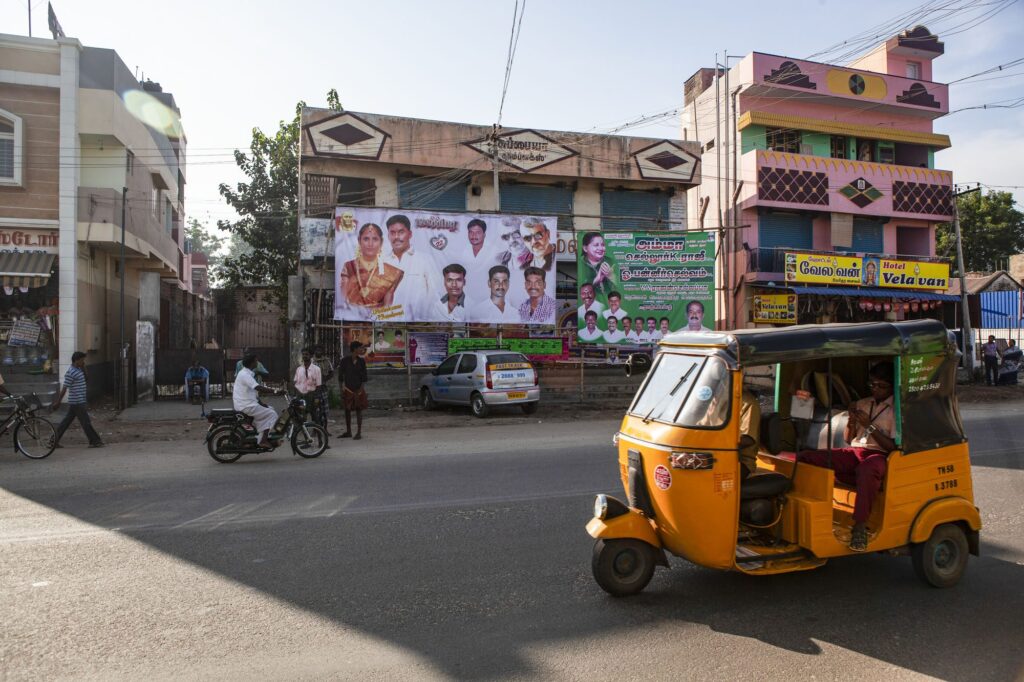First-time travelers to India may feel intimidated by the cultural differences and various norms of this subcontinent of nearly 1.4 billion people. Seen from afar, the different cultural norms may seem very strange. But we at Nomadic Expeditions provide the leading destination experts in India, as well as the top travel guides. Along with several easy tips to practice, you can experience the wonders of India with confidence.
This guide will help you understand the most essential norms to follow as you encounter this world of different beliefs, attitudes, and behaviors. This practical advice will equip you with how to handle different situations and establish rapport with your hosts to make the best of your journey.
1. Bargaining Is Welcome
In India people bargain everywhere—even on the price of the eggs in the grocery store. Here in America, prices are typically fixed, but everything is negotiable in India. Since the left hand is considered unclean (don’t offer it or accept anything with your left), we’re sharing a few tips to keep you on the right side of India’s cultural norms.
2. Symbols Have Different Cultural Meanings
You may see what looks like a swastika in different places throughout India. Rest assured it was appropriated by the Nazi party, and by far outdates it. The symbol first originated in Neolithic Asia and depicted the movement of the sun. In Hinduism, the sun is worshipped as a God. In Buddhism, the swastika is a symbol of “good fortune” and the eternal wheel of Dharma. In Jainism, it is the symbol for Suparshvanatha, the 7th out of the 24 spiritual guides. In fact, the swastika is possibly the oldest known symbol of humanity and is said to be found in various regions of Asia and Africa from periods that are just after the last ice age going back to 10-12,000 years.

3. Cover Bare Shoulders & Knees in Places of Worship
It’s not just good manners. In India, it is a revered tradition across all age groups to shed light on humility, modesty, and innate spirituality. Temples and other places of worship in India are safe havens for one to connect with those attributes and any items, ornaments, or clothing that may distract others are looked down upon.
4. Leave Shoes at the Door
It’s more than just a sign of respect. Leaving shoes at the door is rooted in practical reasoning too, as footwear carries dirt and other impurities. It’s also important because cleanliness is revered here, and considered Godliness.
5. Watch Your Step
In villages, people often eat squatting on the ground. So take care to avoid standing right in front of a person eating, as your feet will be in front of his/her plate of food. Squat or stand nearby instead.
6. Lead With Your Right
Hinduism believes the right hand to be the dominant hand to carry out all auspicious activities and the left hand to carry out all activities pertaining to one’s personal hygiene. For the same reason, a huge majority of Indians are also accustomed to writing and eating with the right hand, and therefore in places of worship, one must accept or offer any holy alms with their right hand cupped over their left.

7. Only Men Shake Hands
The Western tradition of shaking hands when greeting someone holds true in India for men only. If you are meeting an Indian woman, shaking hands may be inappropriate, but a smile or a nod is a safe bet. The accepted greeting or leaving is “namaste” or “namaskar,” usually uttered while pressing the palms of your hands together. Literally translated, it means: “the divinity (or spirit) within me honors the divinity within you.”
8. Public Affection Offends
In India, public displays of affection are considered offensive.
9. Greet Elders By Formal Names
Elders are the most revered members of the Indian family. They bind together the traditional morals and ethics of a household and are kept in high regard when it comes to any kind of decision-making. Certain gestures, such as bending down to touch their feet every morning to greet them, prove their powerful role in traditional Indian families. When it comes to names, the formal way to address an elderly person outside one’s family is by calling the ladies “Shrimati” (Ms.) and the gentlemen “Shrimaan” (Mr.). Most Indians informally attach the term “Ji” as a gender-neutral honorific suffix to the elderly person’s last name, or use simply Ji alone, if they do not know the person’s name.
10. Cows Are Sacred
In the Vedas, the ancient Hindu scriptures, the cow is considered to be “Aditi,” the mother of all Gods. She is revered as one to be protected and cared for. For centuries, cows and buffalos have been nurturers and providers in Indian villages because of their gifts of dairy and their physical labor in the fields. Harming them is considered going against those beliefs. While their meat is difficult to find in some areas of India, the regions with a Muslim majority, as well as Tibetan and North-East settlements, will find restaurants selling a variety of dishes made with various meats.
11. Do Not Wear Leather
Religions such as Hinduism, Jainism, and Buddhism are deeply interwoven with nature. Leather items, which are made from the skin of a dead animal, are considered impure and disrespectful towards the Gods and Goddesses who are worshiped synonymously with nature. Although some places may not be as strict, refrain from carrying along with leather items inside religious sites out of respect.
12. Punctuality Is Important
It is very common for professionals in India to set their clocks forward by a few minutes to avoid being late, even by a second.
13. Always Go Clockwise
When visiting Buddhist monuments such as Chorten (small Buddhist shrines), mani walls (walls built of stone tablets with Buddhist mantras carved on them), or stupas, it is a sign of respect to walk around the stupa in a clockwise direction (so that the structure is to your right side). When spinning a prayer wheel, spin in a clockwise direction.
14. Ask Before Photographing People
While Indian people are very friendly, open, and will welcome you into their homes, it is essential to always ask before taking pictures of people or religious objects and at private ceremonies or festivals. Many women, particularly Muslim women, are offended by being photographed. Please note that across the country photography is prohibited at airports, military installations, some bridges, and some religious sites.
15. Tipping Varies By Region
It’s complicated in India, where the guidelines vary from locale to locale. More often than not, a tip-in India is money paid to get things done and not for something well done! In most restaurants a service charge is not included; a 10% tip is fine, and 15% is considered generous.
By following this simple, practical advice on what to expect and how to behave, you can avoid embarrassing your hosts and demonstrate awareness of the local customs and cultural norms of India. This will allow you to easily make friends as you travel India and have a wonderful journey.

